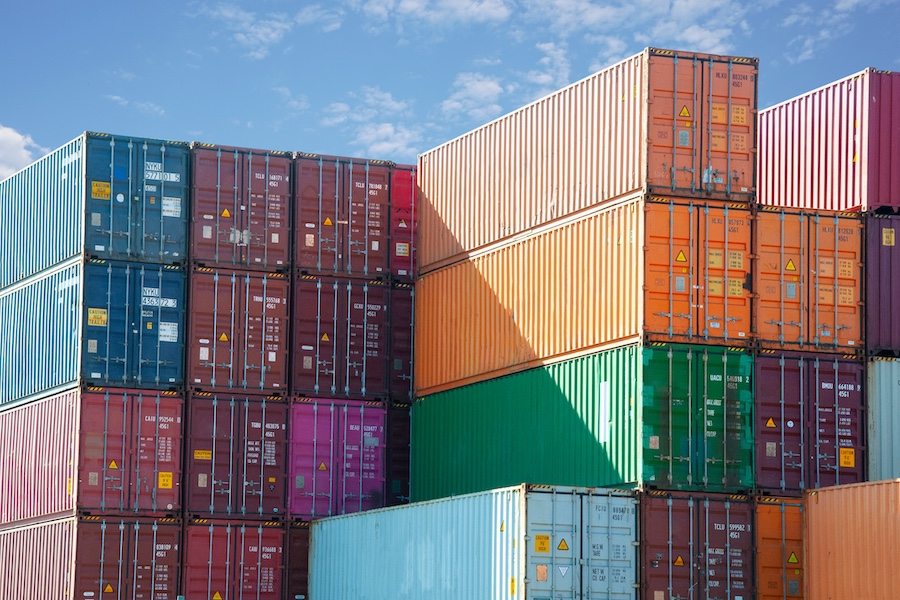As shifting tariff policies continue to disrupt global trade, hospitality developers and procurement teams are facing tough decisions when it comes to sourcing furniture, fixtures, and equipment (FF&E).
Carl Long, president and CEO at Purchasing Management International (PMI), and Steven Bramson, CEO of U.S.-based outdoor furniture manufacturer DecoScape, share four key takeaways about the evolving landscape.
1. A broader, smarter supply chain emerges
After dominating hospitality manufacturing for two decades, China’s position may be weakening. With Trump’s proposed tariffs as high as 145 percent on certain Chinese imports, sourcing from the region now carries major cost and risk.
Although Chinese factories and the government have attempted to soften the blow—offering rebates and accepting thinner margins—Long believes the shift away from China is overdue. “The Chinese government putting their thumb on the scale of their production makes it impossible for the international community to compete,” he explains. “There are some products that you can only get in China now because of the quality of the worker and finishing techniques and chemicals used. But having [China] be the only place, doesn’t make sense.”
Sourcing is diversifying. Countries like Italy, Portugal, Turkey, Colombia, and Indonesia are gaining ground, as are Canada and Mexico, remaining favorable under the U.S.-Mexico-Canada Agreement (USMCA), which includes protections around furniture manufacturing. Long also points to a possible resurgence in U.S.-based manufacturing. “I think the end game is to open the market up for other manufacturers and open up the opportunity for manufacturers in the U.S.,” he shares.
That trend aligns with what Bramson is seeing on the ground. “We’re seeing a clear shift in client behavior toward domestic sources and simplified supply chains. It’s not just about cost savings—it’s about certainty,” he says. “Clients are actively seeking U.S.-based manufacturers who can offer consistent quality and predictable timelines.”
2. Uncertainty is the new cost driver
With policies changing by the day, many developers are choosing to delay rather than make potentially costly decisions. “This level of uncertainty is causing a slowdown in decision-making,” Long explains. “If orders aren’t already placed and if budgets aren’t already set and approved, you can’t pick a direction, budget, or allocate funds correctly.”
Bramson, meanwhile, is seeing that pressure play out on the manufacturing side. “Clients are clearly in a state of flux,” he says. “Everyone’s trying to navigate the instability, and we’re seeing a consistent trend: clients are looking to manufacturers to absorb as much of the tariff impact as possible before they can even consider passing it along to their customers. Many of them are pausing orders right now, not out of lack of interest, but because the environment is so unpredictable.”
However, the 90-day tariff pause has offered some short-term relief, prompting a race to get existing orders out the door before the tariffs potentially kick in. “If you can make it in the next 90 days, make it and get them on the boat,” Long says. “[As of April 10th], we have 88 days left of a tariff pause—if countries can’t reach a deal with the U.S. within that time, it reverts back.”
3. Understand every part of the supply chain
Understanding a product’s full supply chain is now essential. With tariffs applied not only by country but by component origin, manufacturers and procurement firms must stay agile and transparent. “If we’re buying a chair that uses U.S.-made springs, Mexican casters, and Canadian foam, but is assembled in China, our actual exposure to tariffs might be far less than it looks,” Long says.
He emphasizes the importance of maintaining strong, transparent relationships with vendors. “It’s incumbent upon purchasing companies to take that extra step to talk with vendors to ask, ‘Where’s your biggest risk?’ Because it’s not just the furniture, it’s all the components that go into it.”
Long cautions clients to “be pragmatic and patient,” he says. “Don’t make snap decisions. Evaluate the impact on a vendor-by-vendor, country-by-country, product-by-product basis.”
4. A new price baseline is here
Even if policies stabilize, Long believes the hospitality industry is entering a new era of cost expectations after a 25-year run of relatively low-cost products from China. “I don’t see prices going down,” he says. “The bidding process will still happen—but set at a higher base.”
For developers, that means budget recalibrations across the board. “We’re going to roll into challenges of budgeting, where a $25 million project turns into a $30 million one. Where do we get that extra $5 million?” Those extra costs will likely end up trickling down to the consumer.
Although higher costs are a challenge, there’s a potential for longterm benefit. “The new baseline of costs will be higher, but as manufacturing and alternate sources become more viable, those costs have a net benefit to everybody that touches it along the way,” he says. “So, in the short term, there will be heartburn. We feel it.”
“Ultimately, an owner will [decide] if they’re going to increase room rates to cover increased costs,” Long adds. “If room rates are higher, and the overall operational cost is higher, a portion of that increased room rate would also go to staff to maintain this new furniture. It remains to be seen if it will work, but that is the hope—that it raises all boats.”
More from HD:
On the Move: Hospitality Industry Organizational Updates
Boutique Motels Are Redefining Route 66
Aimasia Villa Embraces the Rugged Terrain of Mykonos



